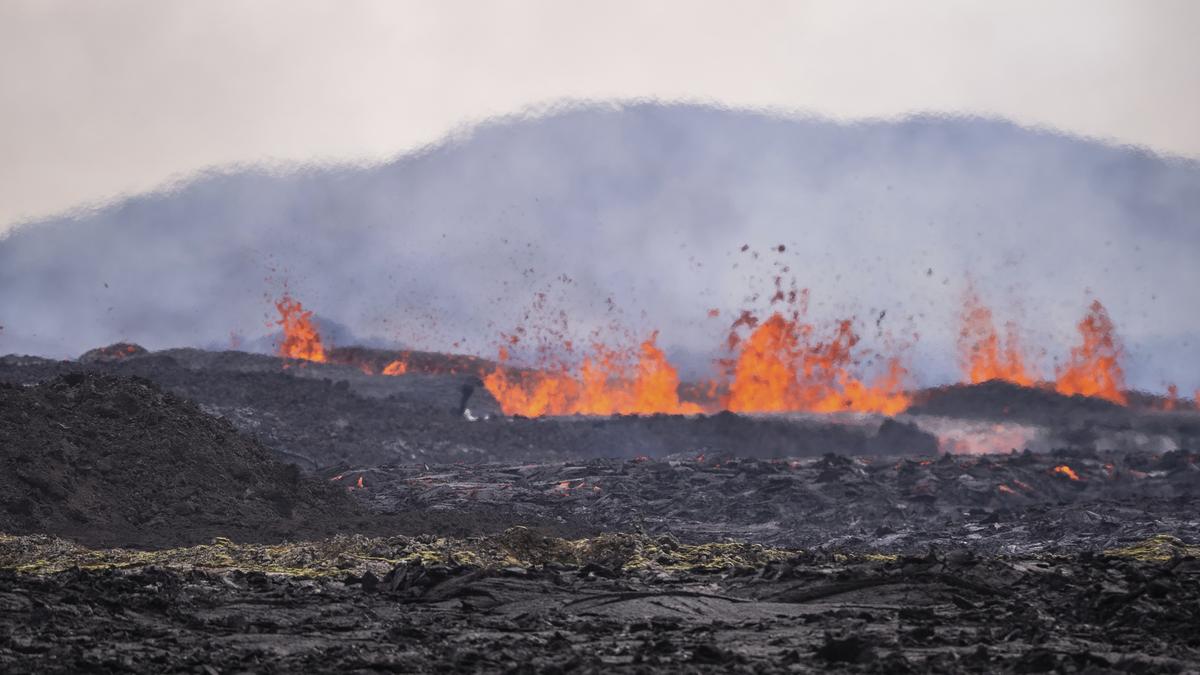A view of the volcanic eruption near the town of Grindavik, on the Reykjanes Peninsula, Iceland. File
| Photo Credit: AP
A volcano erupted in south-west Iceland on Wednesday (July 16, 2025), the country’s meteorological office said, marking the latest in a series of outbreaks near the capital in recent years.
Often referred to as a land of ice and fire, the North Atlantic island nation with its many glaciers and volcanoes has now seen a dozen eruptions since geological systems on its Reykjanes peninsula reactivated in 2021.

The outbreaks, known as fissure eruptions, are characterised by lava flows emerging from long cracks in the earth’s crust, rather than from a central crater.
No major disruptions so far
The Reykjanes eruptions have not so far posed a threat to the capital Reykjavik, nor have they caused significant dispersals of ash into the stratosphere, avoiding air traffic disruption.
The nearby fishing town of Grindavik, home to nearly 4,000 residents before an evacuation order in 2023, however remains mostly deserted due to the periodic threat from lava flows and related eartquakes.
The Blue Lagoon luxury spa and the nearby Svartsengi thermal power station have also been at risk from lava in some of the previous eruptions.
Experts have said the eruptions in the area could recur for decades, or even centuries.
Iceland, which is roughly the size of the U.S. state of Kentucky and has fewer than 400,000 residents, boasts more than 30 active volcanoes.
That makes the north European island a prime destination for volcano tourism – a niche segment that attracts thousands of thrill seekers every year to sites from Mexico and Guatemala, to Sicily, Indonesia and New Zealand.
Published – July 16, 2025 10:10 am IST

